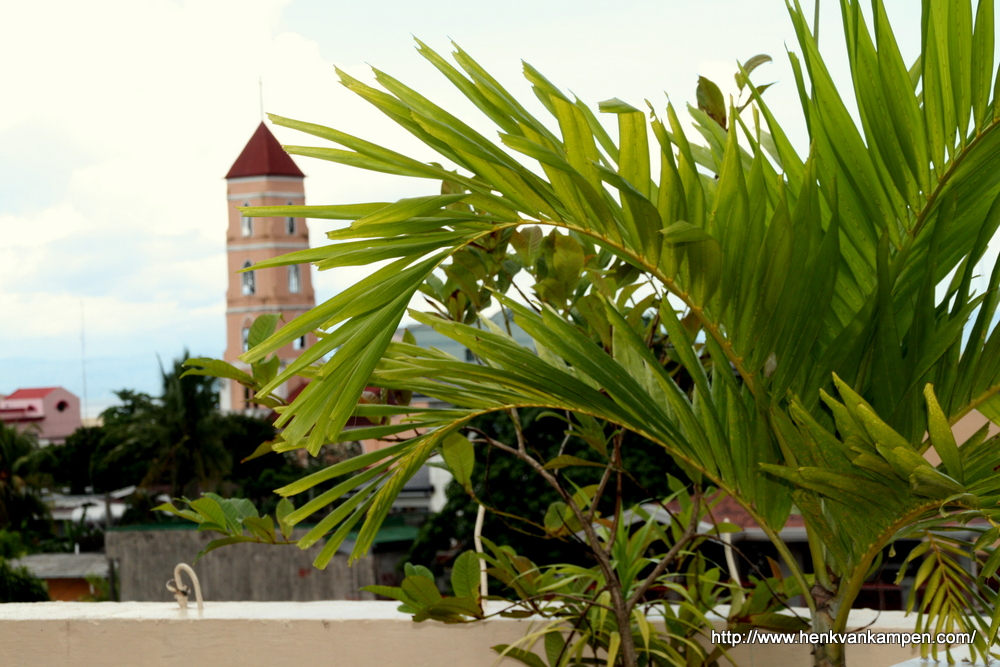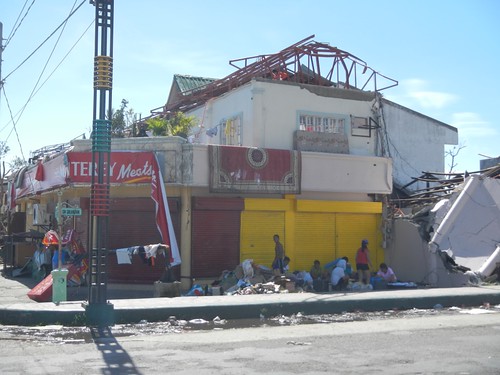A few weeks ago, one of the heaviest storms ever recorded passed through the Philippines. We have all seen the consequences: Thousands are dead, millions lost their homes, cities, towns and villages are destroyed. Most of the reports we’ve seen came from Tacloban, where CNN had a team even before the storm hit.
Tacloban. Most of you probably never even heard of this city before it was flattened by the typhoon. It’s just a city in the Philippines that was hit by a disaster. Most of you have never seen Tacloban as it was before the storm, and will never see Tacloban as it will be when it is rebuilt.
Tacloban. For us it’s not just a city. I met my wife in Tacloban (in real life, that is – we’ve known each other online for a while). Our first kiss was in Tacloban. Our first date was in Tacloban. I asked for her hand in Tacloban. We married in Tacloban. Our son was baptized in Tacloban. We have family and friends in Tacloban. For us, Tacloban is special. Part of our family heritage. Part of our Pinoy Roots.
Tyfoon Haiyan, locally known as Yolanda. We saw it coming. We knew it was big. We knew it would hit hard. From our safe home in Europe we warned friends and family: Watch out, this is an extreme typhoon. They knew, but what could they do? They prepared as well as they could, but who can prepare for a storm like Haiyan?
The storm approached. Late Thursday evening for us, early Friday morning for them. We made a few last phone calls, to our family in Tacloban and to our family in a remote village in Leyte. A last check to see if they were prepared, and to find out where they would be during the storm. We went to bed, but we did not sleep. Two smartphones and a laptop should keep us informed. The storm started. We saw the first messages, live from the storm, from our facebook friends in Tacloban.
And then it was silent. My wife wanted to make a few more phone calls, but the lines were dead. The first facebook messages during the storm were also the last. Tacloban was cut off from the world. As were many other regions, including my wife’s home village. The long wait began.
We didn’t sleep that night. We knew that the storm was big, and we knew that it would hit hard. The whole night we searched for signs of life from the storm area, but there were none. Even CNN could not connect with their team in Tacloban anymore.
The first news came in the morning, from local reporters who walked six hours (yes, six hours! kudos to them!) through bad weather and over destroyed and flooded roads, just so that they could setup a radio connection and get some news out. The news was not good. Destroyed buildings. Bodies floating in the flooded streets. A cathedral (used as storm shelter) with a collapsed roof, and at least twenty bodies inside.
The news report was followed by another long silence.
And then news started to trickle in. News about death and destruction. Slowly, it became clear what happened. Flattened towns. Bodies everywhere. Many, millions maybe, lost everything they had. And we kept searching for a sign of life from our family but found nothing. It was a long weekend.
Haiyan. We saw it coming. We knew it was big. We knew it would hit hard. But we never expected this.
Then, very early on Monday morning, the phone rang. My brother-in-law managed to travel to a place where he could still use his mobile. The message was better than expected: Our family, in Tacloban and in our village, survived Haiyan. They were hungry but alive. Their homes were shattered but they lived.
The story does not end here. A lot has happened since that phone call from my brother-in-law. Even now, we don’t have a full picture of what happened to our family during the storm, how they experienced it, how they survived. Maybe I will talk about Haiyan again, in future blog posts. Or maybe I won’t.
Haiyan, one of the heaviest storms ever recorded. It destroyed family property. It killed good friends. The weekend after Haiyan were the hardest days of our lifes (for my wife and me), but that is nothing compared to the ordeal our family went through (it was a narrow escape for some). Haiyan destroyed family businesses. It put our family in dire straits for a while. We will be coping with the aftermath for months, maybe years.
Haiyan is a horror story. Haiyan changed the life of the people on its path. And, though I myself only watched from a safe place on the other side of the world, Haiyan is certainly a part of our family history, of my son’s heritage. Part of his Pinoy Roots.
Photo Credit: Cedric Vandermeulen, EU/ECHO, Palo, Leyte, Philippines, 17 November 2013. Found on Flickr under a Creative Commons Attribution-NoDerivs 2.0 Generic (CC BY-ND 2.0) license.


May the
Lord bless your families.
My grandfather is from Baybay, Leyte, P.I. Do you knoww how bad this town was hit? I think its two hours west from Tacloban.
Sincerely Lola
p.s. thank you for resources
Hi Lola, I’m not sure how bad Baybay was hit. I know they were hit and there was lots of damage, but I think it was not as bad as other places.
Did you know Baybay is on facebook?
https://www.facebook.com/baybaycityleyte
Regards,
Henk